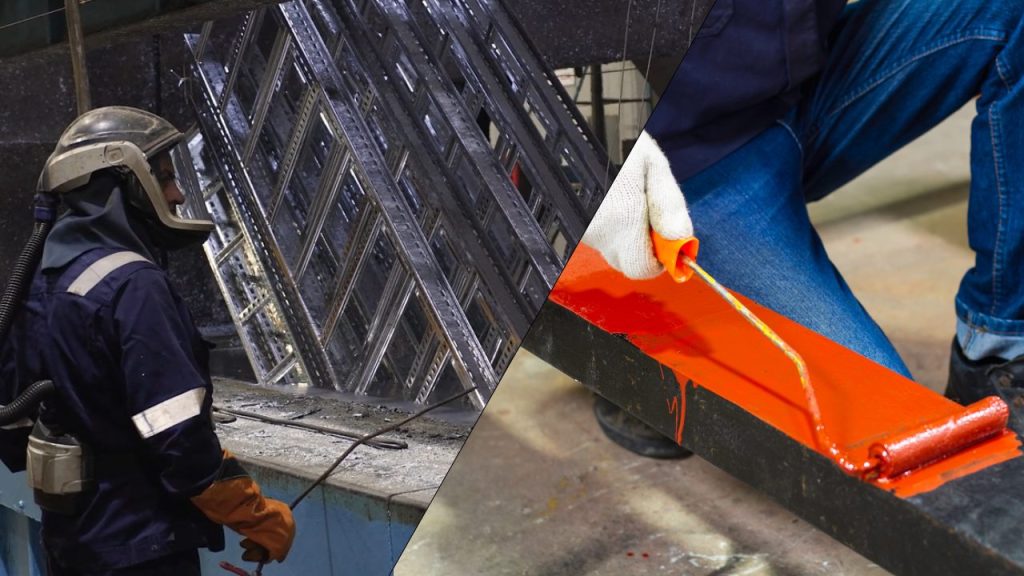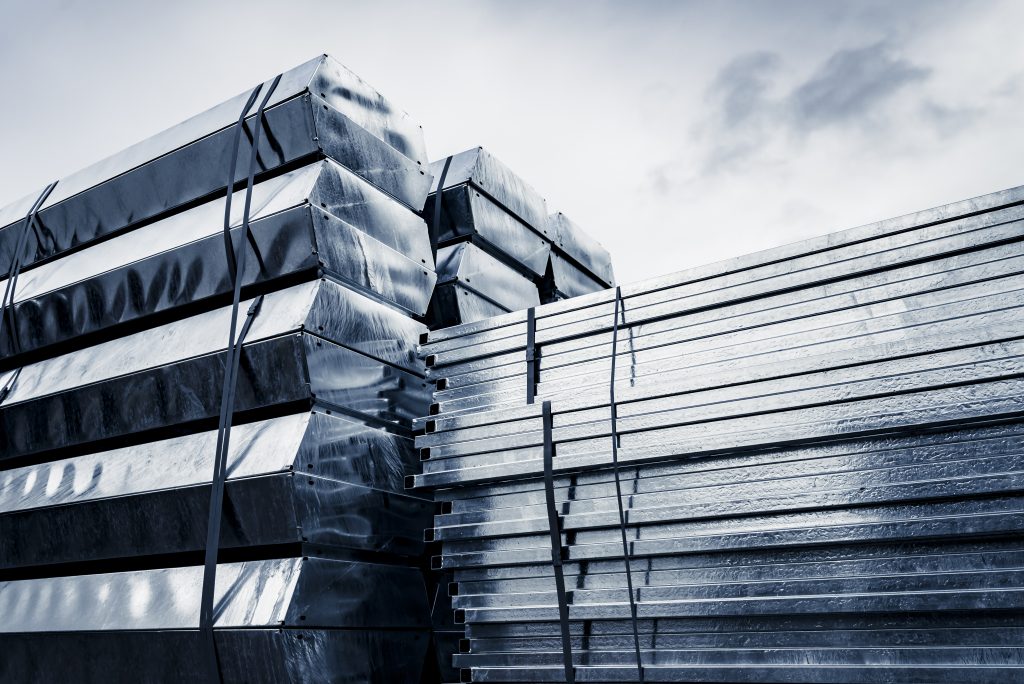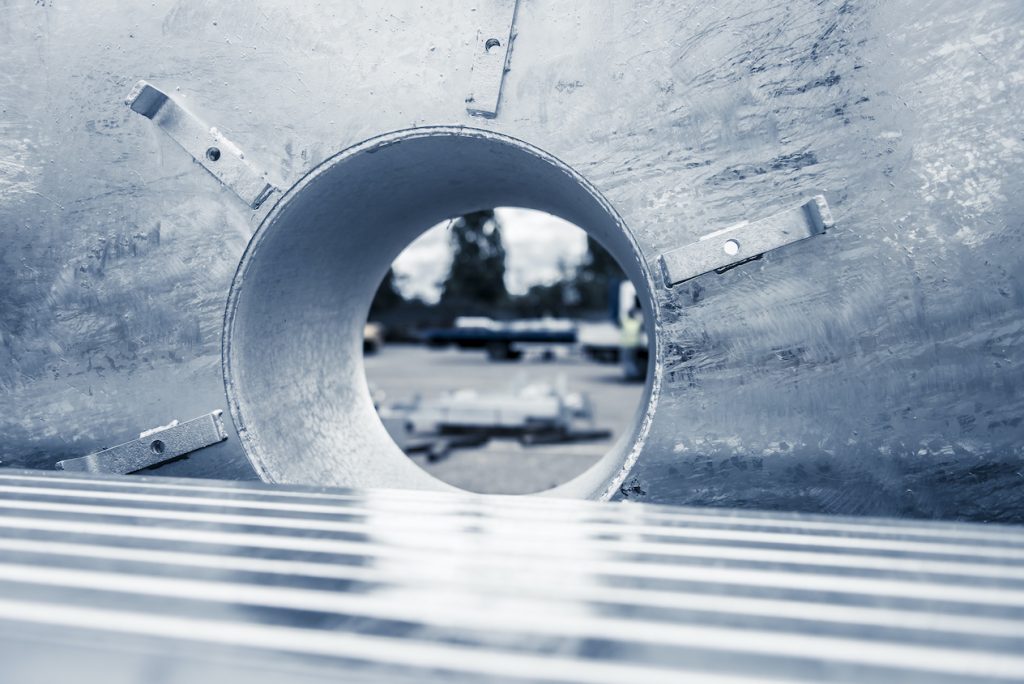Galvanizing vs Paint
What is the best steel coating method?
Hot dip galvanizing and commercial paint are two popular steel coating methods, used to help protect steel from corrosion and extend its lifespan. However, you may be wondering whether galvanizing or paint is better for protecting your steel.
We compare galvanizing and paint as coating methods for steel, on a number of different metrics to help you decide which is better for your steel fabrication.

Round 1: Performance
When it comes to performance, hot dip galvanizing can last for several decade maintenance-free under usual circumstances. In the right environment, galvanized steel can last over 100 years against corrosion.
In comparison, paint on steel lasts for a maximum of around 20 to 25 years. While this is still quite a long lifespan, this is only if the steel is kept away from almost all external variables, such as bad weather.
When comparing galvanizing and paint like-for-like on performance, galvanizing is the clear winner, having a much longer lifespan in different types of environment.
Round 2: Coating adherence
Adherence is especially important when it comes to coating your steel, because if it the coating can’t stay on the steel, it no longer protects the steel from corrosion.
Paint can stay on steel for a while, assuming the steel doesn’t get knocked or handled too much. However, because paint is a surface-level coating, it can easily chip off, leaving the underlying steel exposed.
Hot dip galvanizing, on the other hand, creates a metallurgical bond with the steel. This is because of the reaction that happens when the molten zinc from the galvanizing bath makes contacts the steel. The reaction makes the zinc coating becomes part of the steel itself, so it doesn’t chip away. The coating is much more durable as a result, which is what gives steel an enhanced lifespan.

Round 3: Resistance to damage
Depending on where your steel is erected, or what it’s being used for, it’s likely that it will be handled or impacted a lot. This can wear away the coating, leaving your steel vulnerable to corrosion.
We’ve already covered that molten zinc forms a metallurgical bond with the underlying steel, which is how the coating lasts for so long. This bond means that it is also very resistant to mechanical damage, so you can handle your steel without worrying about removing its corrosion-resistant properties.
Because paint only provides a simple bond to the steel, it means it is more prone to mechanical damage. Additional care needs to be taken when handling to ensure the coating does not get damaged. This makes paint unsuitable for steel that needs to be handled a lot, such as large structural steel fabrications or steel that is used in transport.
Round 4: Weather resistance
Most steel comes into contact with the outside world, which means it needs to be resistant to rain, snow, and hail, as well as humid and fluctuating temperature environments.
The longevity of paint coatings is entirely dependent on the environment the steel is in. If it is too hot or humid outside, the painted coating is compromised and could peel off of the steel. This leaves the underlying steel vulnerable to corrosion – especially from rain – as it can get into the cracks left in the coating.
Galvanized steel doesn’t become compromised until at least 200°C (390°F) – far hotter than the hottest day on record! Galvanized steel is also resistant to corrosion from moisture, so even if it’s raining or it’s humid outside, the steel won’t corrode easily.

Round 5: Coverage
In order for your steel coating method of choice to be effective, it needs to cover all areas of your steel. Otherwise, corrosion can develop in the uncoated areas, compromising the rest of the steel.
Painting steel is a very time-consuming and manual process. Because it is done by hand, there is lots of room for human error, making it easy to miss narrow corners and edges. Paint also only provides a surface-level coating. As mentioned previously, this makes it more susceptible to chipping and mechanical damage, leaving your steel vulnerable to corrosion.
Hot dip galvanizing, on the other hand, provides both internal and external coverage for steel thanks to the metallurgical bond that forms from the molten zinc. This makes galvanizing superior at protecting against corrosion by providing a consistent and reliable finish.
Galvanizing industry standards such as BS EN ISO 1461 also mean your steel will be galvanized to a specified coating thickness, further ensuring a reliable coating process.
Round 6: Whole life-cycle cost
When you compare the price of individual coating sessions, paint is cheaper than galvanizing. However, when it comes to the total cost of coatings over the course of the steel’s lifespan, galvanizing works out far cheaper. Paint doesn’t last as long, meaning you will need to frequently pay and spend time to recoat the steel whenever it needs amending.
According to the Galvanizer’s Association, a “cheaper” paint system is almost 70% more than the cost of galvanizing over the course of a 25-year project life.
Not only do you save money over time, but you can be sure your steel will last even longer against corrosion – a win-win.
And the winner is…
Galvanizing is superior to paint for performance, coating adherence, damage resistance, weather resistance, reliability, and whole-life cycle costs.
Contact your nearest galvanizing plant today for a quote on galvanizing your steel fabrications.